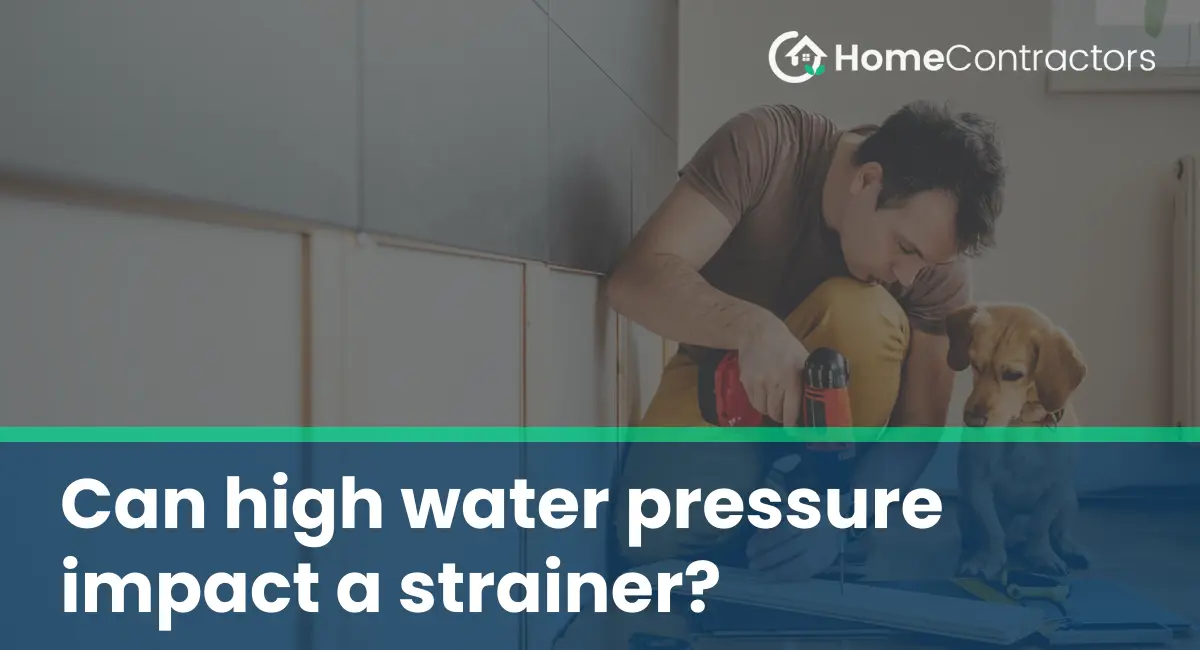1.1 Definition and Function
Strainers are devices installed in plumbing systems to filter out debris and unwanted particles from a fluid (liquid or gas) flowing through a pipe. They consist of a mesh, screen, or perforated plate that captures solids while allowing the fluid to pass through freely.
- The Impact of High Water Pressure on Strainers
- 1 Increased Stress on the Mesh or Screen
High water pressure exerts additional stress on the mesh or screen of a strainer, potentially causing damage. The force applied by the water can lead to deformations, punctures, or tears in the strainer’s filtration component, compromising its efficiency.
2.2 Reduced Filtration Effectiveness
When the mesh or screen of a strainer is compromised due to high water pressure, the filtration effectiveness decreases. Larger particles may bypass the damaged area and enter downstream equipment or the system itself, leading to potential blockages, equipment malfunctions, and reduced system performance.
2.3 Strainer Distortion or Buckling
Excessive water pressure can cause strainers to distort or buckle, especially when they are made of relatively weak materials. This distortion can alter the proper alignment of the strainer, preventing it from fitting securely in the pipeline. As a result, flow restrictions may occur, reducing system efficiency, and potentially causing damage to the plumbing infrastructure.
- Potential Risks of High Water Pressure Impacting Strainers
- 1 Increased Repair and Maintenance Costs
When strainers are exposed to high water pressure, they are prone to damage. This damage may necessitate frequent repairs or replacement, leading to increased maintenance costs for the plumbing system.
3.2 Downstream Equipment Damage
When particles bypass a compromised strainer due to high water pressure, they can accumulate in downstream equipment such as valves, pumps, or heat exchangers. This can result in clogging or abrasion, leading to reduced equipment lifespan, increased energy consumption, and potential system failures.
- Mitigating the Effects of High Water Pressure on Strainers
- 1 Regular Monitoring and Maintenance
To prevent the detrimental effects of high water pressure on strainers, regular monitoring and maintenance are crucial. Implementing a pressure-reducing valve (PRV) in the plumbing system can help regulate the water pressure within an acceptable range, protecting strainers from excessive stress.
4.2 Installing Pressure Relief Valves
Pressure relief valves (PRVs) serve as safety devices that release excess pressure from the system, preventing damage to the strainers and other components. When the pressure exceeds a predetermined threshold, the PRV opens, diverting the excess water flow and safeguarding strainers from potential harm.
4.3 Choosing Robust Strainer Materials
Selecting strainers with robust construction materials, such as stainless steel or brass, contributes to their resilience against high water pressure. These materials offer enhanced strength and durability, reducing the risk of damage under high-pressure conditions.
High water pressure can impact strainers through increased stress on the filtration component, reduced filtration effectiveness, and strainer distortion or buckling. Understanding these effects and implementing measures such as regular monitoring, PRV installation, and choosing robust strainer materials are essential in mitigating the potential risks associated with high water pressure. By taking appropriate precautions, it is possible to maintain the integrity and efficient functioning of strainers in plumbing systems.
